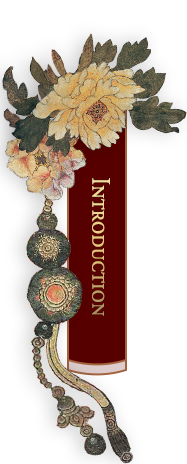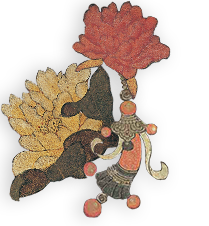
The Legend of Fahai Temple Mural
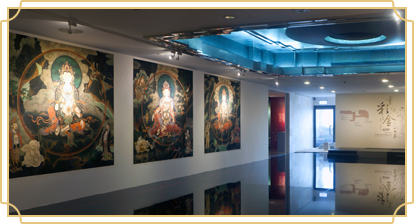
Construction of the Fahai Temple, located in Beijing’s Shijingshan district, began in the fourth year of the reign of Ming Emperor Zhengtong (CE 1439), almost six hundred years ago. The colourful murals adorning the Hall of Great Strength have been preserved, allowing their meticulous composition to be seen even down to the present day. The murals were the result of a collaboration between court painters and folk artisan painters. There is deep religious meaning and artistic technique in each and every Buddha and bodhisattva and every single floral scene, creating a majestic and refined Buddha realm.
After a long and tumultuous history, this is the first time the murals and cloisters of Fahai Temple have been exposed to the world outside the temple in the form of a full exhibition. This special exhibition will look at the murals from three different perspectives.
Textual criticism, painting techniques and modern technology are used to copy the original mural to enable viewers to catch a glimpse of the spectacular beauty of this 600-year-old murals.
Multimedia effects and graphic explanations are used to give visitors a quick taste of what awaits them in Fahai Temple, so that they can enter the Hall of Great Strength and genuinely appreciate the murals.
The themes and images of the murals are explained and analysed, as are the techniques which were used to create them, and the most important features are highlighted. Together with related historical objects on display, this enables the viewer to understand more about the murals.
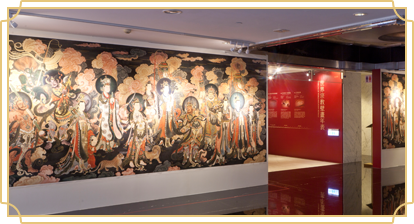
Five precious privately owned replicas are on loan to the exhibition: statues of Shuiyue Guanyin, Manjushri and Samantabhadra and pictures of Brahma and Indra worshipping Buddha. With the help of contemporary fine brush and heavy colour painters, the splendid colours of the Fahai Temple mural were recreated using advanced printing technology and many years of research and experimentation on mural-painting techniques and mineral pigments. This is the copy which greets visitors as they enter the exhibition. Come and take a look!
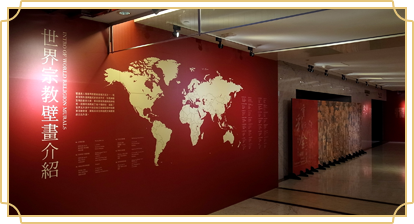
The mural is one of humanity’s earliest forms of artistic expression, having both religious significance and ceremonial expression. It is also an important element of a holy space and possesses both artistic beauty and spiritual value. The exhibition also describes the long history and rich cultural meaning of all kinds of religious murals in both China and the West: from ancient religious civilizations to present day religious beliefs.
Li Tong, a eunuch working in the Privy Purse, raised funding for Fahai Temple. Construction began in the fourth year of the reign of Ming Emperor Zhengtong (CE 1439) and was completed four years later. Ming emperor Zhengtong gave the temple the name “Fahai Zen Temple”. The original temple was on a massive scale and was restored several times during the Ming and Qing Dynasties. The temple’s long history and venerable status can be seen from records engraved on tablets and pillars which have been preserved to this day.
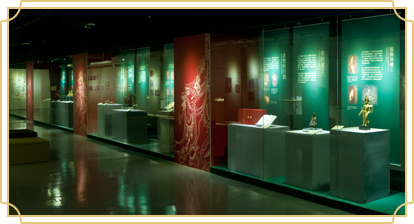
The temple consists of four rows of buildings built into the mountain side. The main hall is called the Hall of Great Strength. There are also the Hall of Vajrapani, protector of Buddha, the Hall of Heavenly Kings, the dispensary and the sutra depository. The Hall of Great Strength originally contained statues dedicated to the Buddhas of the past, present and future, to the eighteen arhats, Mahakala and to Li Tong. All of these were destroyed during the Cultural Revolution, but somehow the mural survived completely intact. After recently being restored, in 2008 Fahai Temple was once again opened up to the outside world. In order to protect the murals, lighting is not allowed in the Great Hall and visitors have to use a special flashlight to view them.
Covering a total area of more than 230 square metres, the Fahai Temple murals are located in the south-facing Hall of Great Strength and stretching from south to north (front to back) on the central partition wall of the great hall, on the gables to the east and west and on the back wall.
The south part of the central wall is painted colourful clouds and originally served as a backdrop to a statue of the Buddha.
The north part shows three great figures: in the centre is the bodhisattva Guanyin, on the left is the bodhisattva Samantabhadra and on the right is the bodhisattva Manjusri.
The east and west gables bear the scene The Meeting of the Buddhas.
The walls on either side of the rear door of the great hall show Indra and Brahma revering Buddha. There are twenty gods, accompanied by their followers, making a total of thirty-six figures.
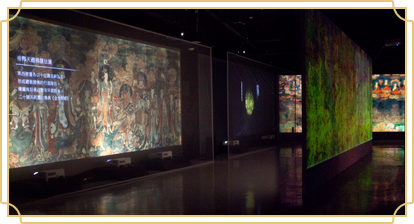
The sections on the east and west walls showing the meeting of the Buddhas. In all, the composition includes eight major bodhisattvas, the Buddhas of the Ten Directions and twelve bodhisattvas of perfect enlightenment, a unique amalgam of all the sutras of Han Buddhism. This mural depicts all these Buddhas and bodhisattvas, showing a meeting of the Buddhas of the Ten Directions and their ten bodhisattvas each, representing a relaxed setting of the perfect Dharma world. It also shows how the Buddhist ceremony of that time revered the gathering of the Buddhas and bodhisattvas of the Ten Directions and Three Ages. The few Buddhas and bodhisattvas depicted in this limited space represent the entire gathering of Buddhas and bodhisattvas.

The Fahai Temple mural uses heavy colours and a highly difficult gold embossing technique, together with complex and meticulous brush technique, to create an incomparably vivid tableau. The Buddhas and bodhisattvas, the twenty gods, the clothing, the plants and animals, the landscapes and magical clouds—all these themes are given narrative content and skillful artistic rendering. Scientific analysis is used to break down complex content and themes, using drawings and historically relevant objects to explain in an easy-to-understand manner the aesthetic significance and spiritual meanings of the murals.
